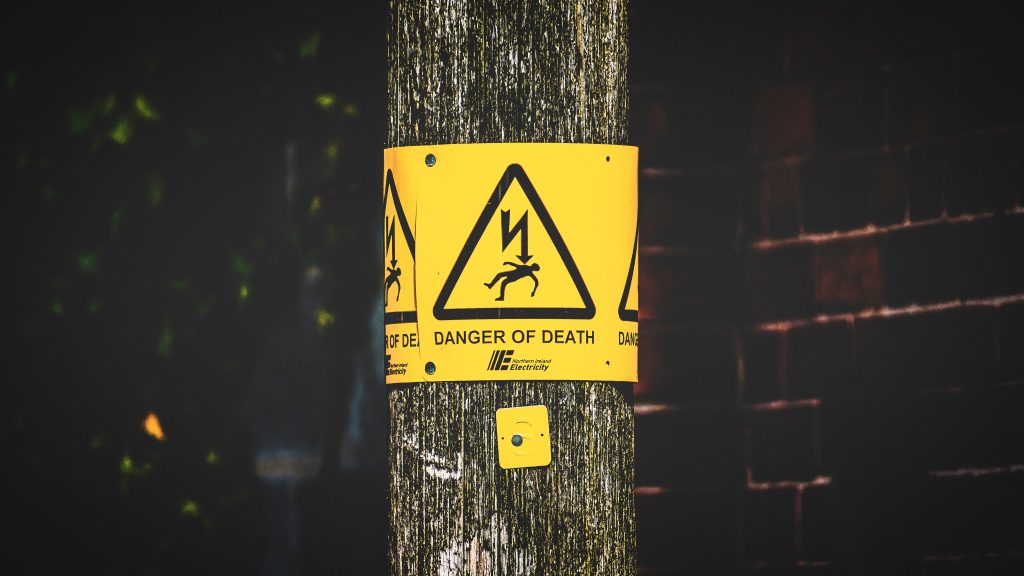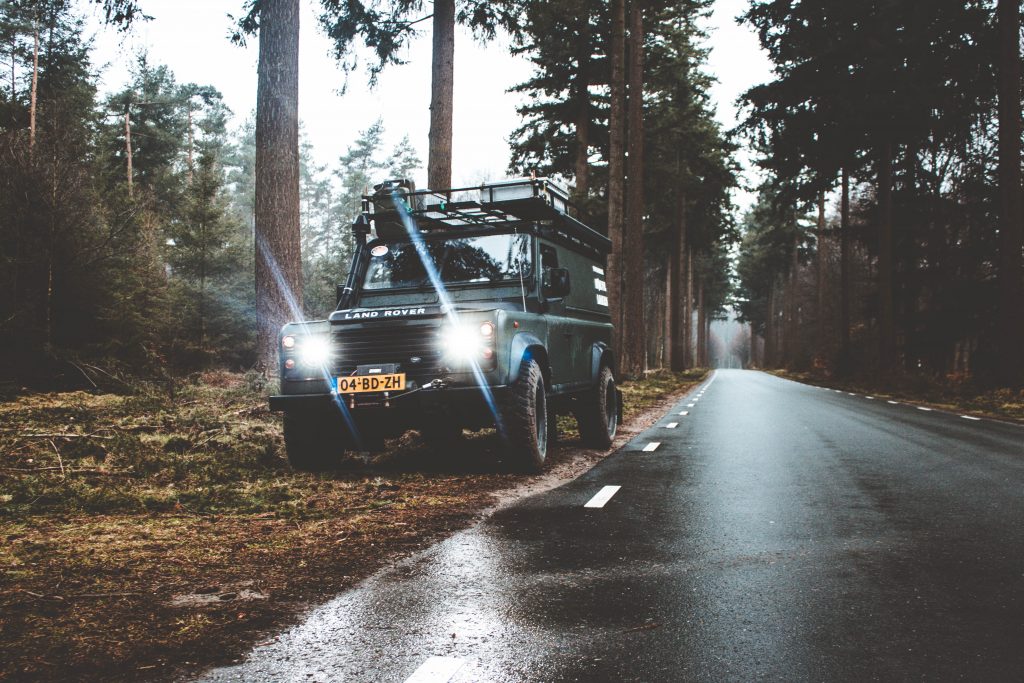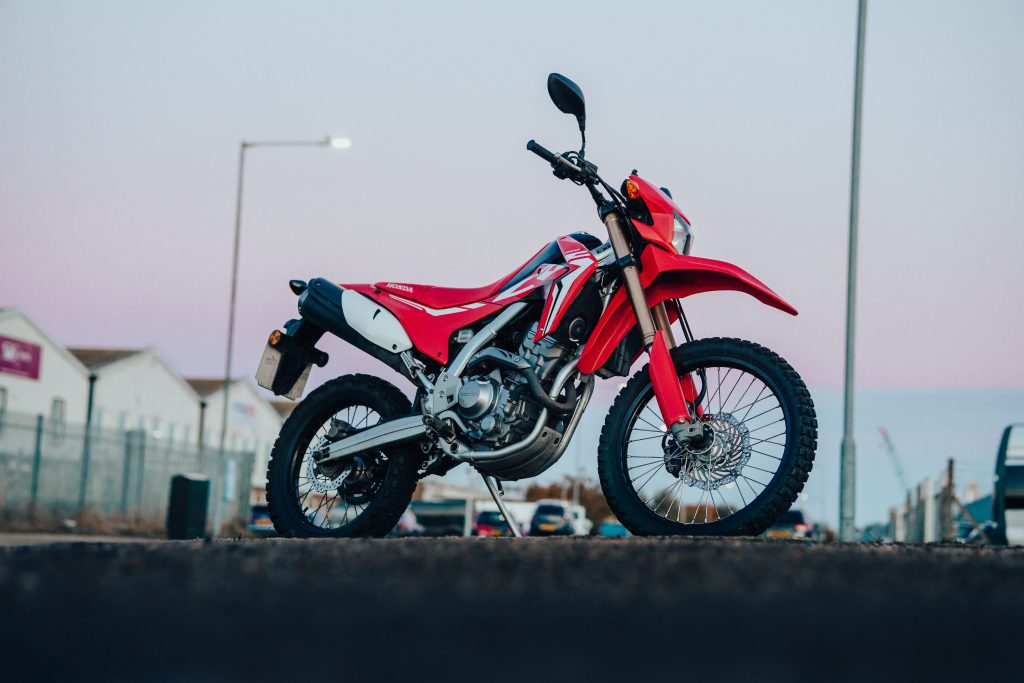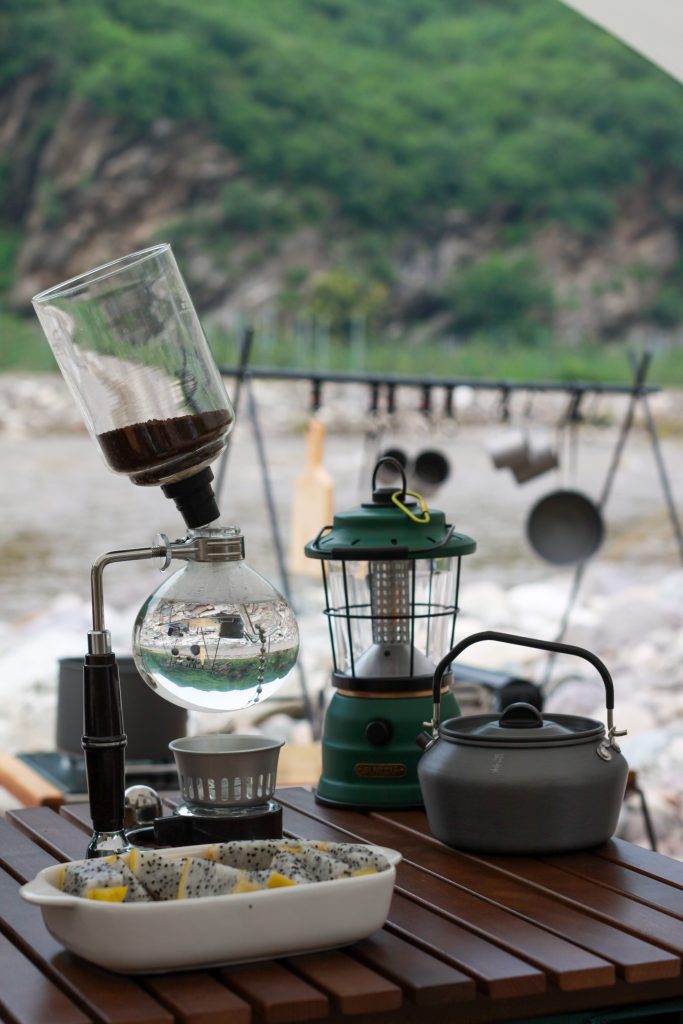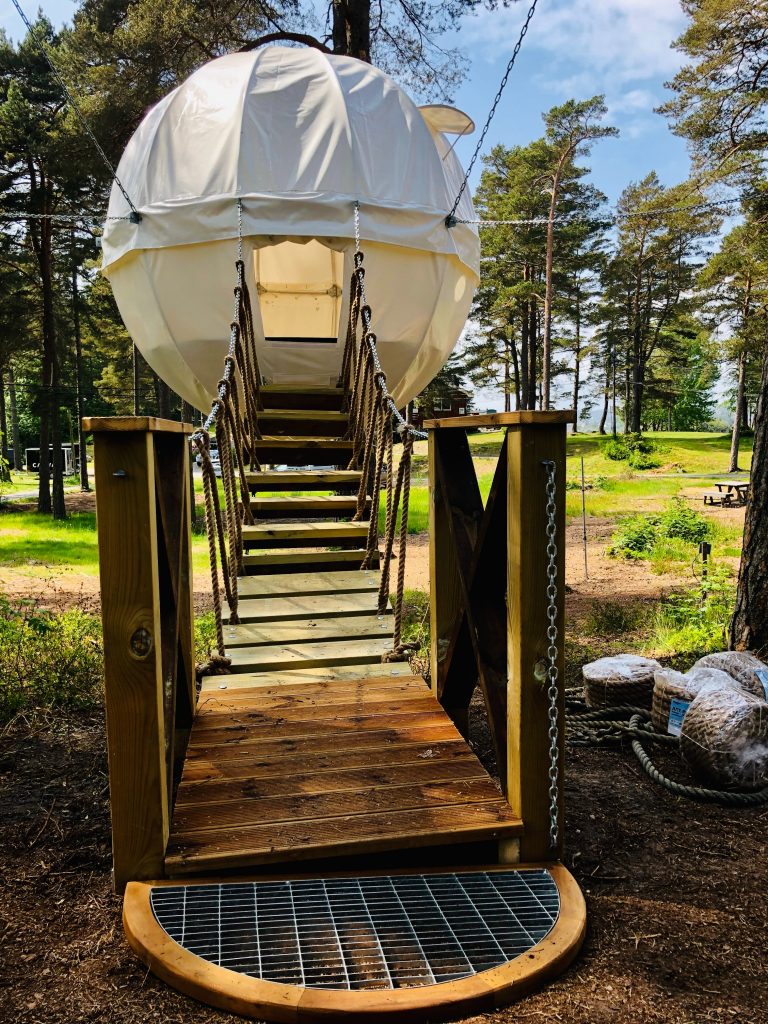As a gun owner, you’ve probably assessed your firearm and examined where its reliability could be tested given a slew of survival scenarios. Undoubtedly, you’ve looked carefully at the magazine. It is after all the critical component that a magazine-fed firearm relies on to feed ammo into the chamber effectively and efficiently. Are you positive it’ll always work when you need it to? As you most likely know, a magazine contains a certain metal component which renders the entire firearm ineffective when it breaks or loses its elasticity. We are speaking of course about the spring, which is why the latest project from AmmunitionToGo.com recently garnered our attention.
How long can a mag spring last? Does leaving a mag loaded for an extended period of time gradually damage its spring? Does the simple act of loading a mag damage its spring in any measurable way? These are the questions Ammo To Go set out to answer by conducting a mag spring torture test (or mag spring enhanced interrogation test, if any congressional committees ask about it).
Ammo To Go’s Mag Spring Test Process
The team at Ammo To Go spent almost a year loading, unloading, and testing the spring functionality of 13 different mags:
- Magpul Gen 2 PMAG (30 rds)
- Magpul Gen 3 PMAG (30 rds)
- Magpul Gen 3 PMAG (40 rds)
- Amend2 AR-15 mag (30 rds)
- Lancer AR-15 mag (30 rds)
- USGI AR-15 mag (30 rds)
- Smith & Wesson Shield 9mm mag (8 rds)
- ETS Glock 17 mag (17 rds)
- Glock 17 Factory mag (17 rds)
- Magpul Glock 17 mag (17 rds)
- Glock 17 Factory mag (33 rds)
- USGI 45 ACP 1911 mag (7 rds)
- Wilson Combat 45 ACP 1911 mag (8 rds)
First, they used a digital force gauge to establish each mag spring’s resistance. Then they subjected samples of each mag listed above to the following test protocol over the course of year.
- Load to full capacity; store in climate controlled environment
- Load to full capacity; store in shed where temperatures regularly fluctuate to over 100 °F
- Do not load; store in climate controlled environment
- Do not load; store in the miserably hot and stuffy shed
- Load to half capacity; store in climate controlled environment
- Load and unload to full capacity five times biweekly; store in climate controlled environment
- Load and unload to full capacity 15 times biweekly; store in climate controlled environment
- Load and unload to full capacity 15 times biweekly; store in the same horrible shed
The ATG crew regularly took the mags to the range for field testing throughout the duration of the test. Their team fired one round every two seconds, and then used the same digital force gauge to determine whether the mag springs’ resistance values changed in any significant way.
The Mag Spring Torture Test Results
After about ten months, hundreds of hours, thousands of rounds, and countless mosquito bites, their team determined the following: zilch.
Allow us to elaborate using the PMAGs as an example. Regardless of how frequently they were loaded or unloaded – and regardless of their storage conditions – not a single PMAG failed. The digital force gauge revealed zero significant variability in their springs’ resistance!
This isn’t to suggest that the PMAGs weren’t changed over the course of testing. In many cases the springs put up 20-25% less resistance than they had when the mags were fresh out of their factory packaging. Even so, all of the PMAGs performed flawlessly during field testing, and the other manufacturers’ mags followed suit.
So, They Did Even More Testing
The test protocol revealed that factory mags are pretty much unaffected by regular usage. But they wanted to determine precisely how much punishment a mag can tolerate before its spring starts pushing up daisies. That’s why they recruited help from the only people who are bigger nerds than us: the laboratory technicians of Applied Technical Services.
The team gave ATS a factory 17-round G17 mag and a 30-round PMAG. They slightly modified each mag to fit correctly into their spring compressing contraption and proceeded to punish the absolute bejeezus out of the poor little springs.
Their results were fascinating. The G17 mag spring endured 14,842 cycles (the equivalent of 252,314 rounds) before it snapped; the PMAG endured 69,881 cycles (2,096,430 rounds) before it finally gave up the ghost. To put that into context, if you were to fire a case of 223 Rem ammo every two weeks, the PMAG spring would endure for eight decades. That’s bananas!
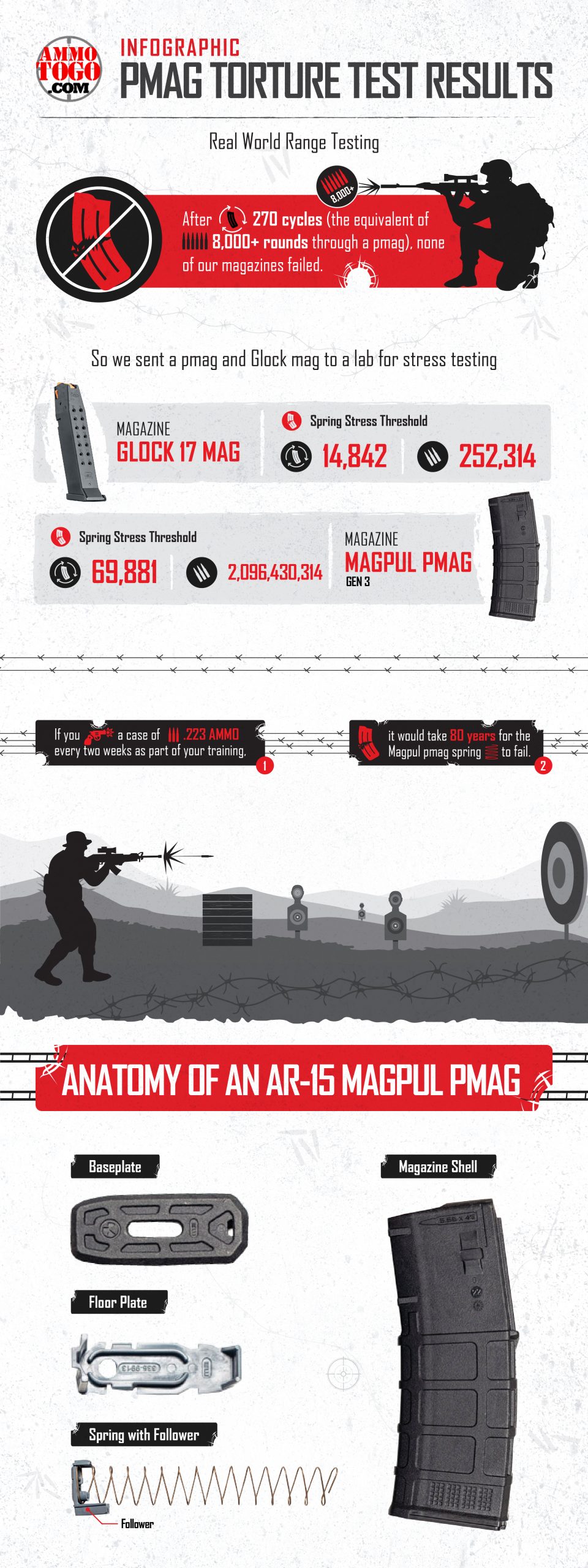
Test Limitations
You can’t pretend that ATS’s testing perfectly emulated real world conditions. When they’re used by actual firearm enthusiasts, mags get dirty, subjected to temperature fluctuations, dropped, quickly reloaded, and otherwise mistreated. You can reasonably expect environmental damage to shorten a mag spring’s lifespan, but their tests didn’t confirm that expectation through scientific experimentation.
Regardless, it’s safe to conclude that mag springs are outstandingly rugged. Kudos to the manufacturers for appreciating just how essential springs really are!
Does Storing a Mag Half Loaded Extend Its Lifespan?
Many folks believe they can protect their mag springs by “downloading” – i.e. loading their mags shy of full capacity. Their reasoning is simple enough: by avoiding full compression, the spring retains its resistance and full functionality.
The ATG team put this theory to the test by downloading Gen 2 and Gen 3 PMAGs, as well as Amend2 AR, G17 and S&W Shield mags. After 10 months of identical use and storage conditions, they measured no significant difference in spring resistance between the downloaded mags and analogous mags that they left unloaded or fully loaded when they weren’t in use. Like we pointed out earlier, the test’s protocol doesn’t perfectly emulate real world conditions, but there’s no evidence downloading poses any actual advantage.
Conclusion
At the end of the day, it’s typically wear and tear or factory defects that render mags ineffective – not gradual spring deterioration. So long as you take care to maintain your firearm, you can expect reliable performance from your mag for many decades. One less thing to worry about, we say!














